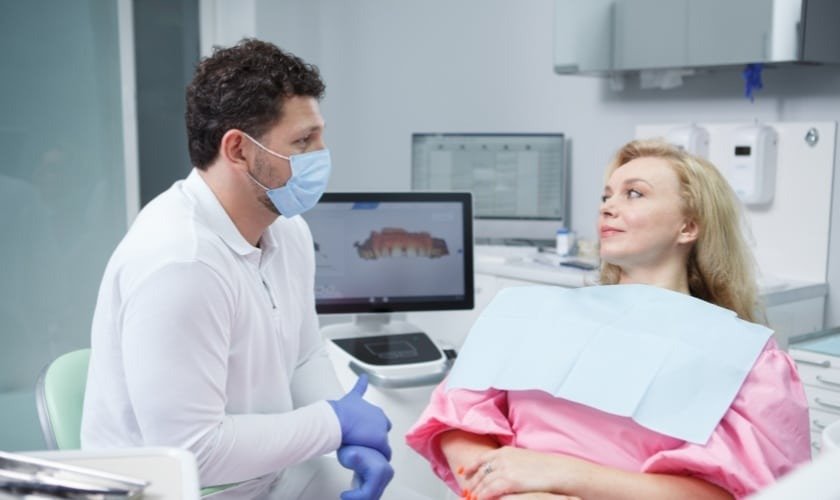The no scalpel vasectomy (NSV) has become one of the most popular methods of permanent male sterilization worldwide due to its simplicity, safety, and quick recovery. While the procedure effectively prevents the transport of sperm into semen, questions remain about its broader physiological effects—particularly how it influences the composition of seminal plasma, the fluid component of semen that plays a key role in fertility, immunity, and sexual function.
This article explores how a no scalpel vasectomy may alter seminal plasma biochemistry, the mechanisms behind these changes, and their clinical significance for men’s reproductive health.
Understanding the No Scalpel Vasectomy Procedure
A no scalpel vasectomy differs from the traditional vasectomy in its surgical approach. Instead of making incisions, the surgeon uses a small puncture to access and block the vas deferens, the tubes that carry sperm from the testicles to the urethra. The procedure minimizes tissue damage, bleeding, and infection risk while achieving the same contraceptive goal—preventing sperm from entering semen.
After NSV, a man’s ejaculate still contains seminal plasma, produced by the seminal vesicles, prostate gland, and bulbourethral glands, but no sperm. Since the testes continue producing sperm that are later reabsorbed, the physical blockage changes how testicular and accessory gland secretions interact, potentially altering the biochemical profile of seminal plasma.
What Is Seminal Plasma and Why Does It Matter?
Seminal plasma is a complex mixture of proteins, enzymes, lipids, ions, and signaling molecules that support sperm survival, motility, and fertilization capacity. It provides a medium for sperm transport, regulates pH, modulates immune tolerance in the female reproductive tract, and carries antioxidants that protect sperm DNA from oxidative damage.
Major components of seminal plasma include:
- Fructose: Energy source from seminal vesicles.
- Citric acid and zinc: Prostate-derived compounds essential for enzyme function.
- Prostaglandins: Regulate smooth muscle contraction in the female tract.
- Seminal plasma proteins: Modulate sperm capacitation and immune protection.
Alterations in any of these components can have downstream effects on the biochemical balance of semen, even when fertility is no longer a concern after vasectomy.
How No Scalpel Vasectomy May Affect Seminal Plasma
Although NSV doesn’t directly manipulate the glands that produce seminal plasma, disruption of the vas deferens may indirectly influence the fluid’s composition. Here are the key mechanisms involved:
1. Sperm Absorption and Back Pressure
After NSV, sperm produced in the testes cannot exit through the vas deferens. Over time, sperm are reabsorbed by the epididymis and adjacent tissues. This process can cause mild back pressure in the reproductive tract, affecting the secretion and drainage of epididymal fluids. As a result, certain proteins or enzymes that normally mix with seminal plasma may change in concentration or be absent altogether.
2. Altered Protein Profile
Studies comparing semen samples before and after vasectomy have shown changes in specific protein concentrations within seminal plasma. For example:
- Reduced epididymal proteins such as clusterin and epididymal secretory protein E1.
- Altered levels of prostatic proteins, possibly due to feedback effects on local secretion.
These shifts suggest a subtle remodeling of seminal plasma composition post-NSV.
3. Inflammatory and Immune Factors
Blocking the vas deferens can occasionally trigger a localized immune response, as the body may form antibodies against sperm antigens that leak into surrounding tissues. Although such immune reactions are typically mild, they can lead to minor inflammatory changes detectable in seminal plasma.
Increased levels of cytokines like interleukin-6 (IL-6) and tumor necrosis factor-alpha (TNF-α) have been observed in some post-vasectomy samples, indicating low-grade inflammation in the reproductive tract.
4. Oxidative Stress and Antioxidant Activity
Seminal plasma contains powerful antioxidants—such as superoxide dismutase (SOD) and glutathione peroxidase—that protect sperm and surrounding cells from oxidative stress. Some research indicates a slight decline in total antioxidant capacity (TAC) after vasectomy, potentially reflecting oxidative adjustments during the sperm reabsorption process.
However, in most men, these changes remain within normal physiological limits and do not cause systemic harm.
5. Hormonal and Glandular Feedback
Though vasectomy does not directly alter hormonal production, subtle feedback changes in the epididymis and accessory glands can influence glandular secretions. For instance, prostate function and seminal vesicle activity depend on testosterone and local signaling; changes in sperm transport might slightly modify their secretory rhythm, subtly affecting seminal plasma volume or consistency.
Clinical Implications of Seminal Plasma Alterations
1. No Impact on Sexual Function
Despite measurable biochemical shifts, no scalpel vasectomy has no negative effect on libido, erectile function, or orgasmic satisfaction. Most men experience the same ejaculate volume and consistency, as seminal plasma still makes up 95% of semen. The only major difference is the absence of sperm.
2. Potential for Research Biomarkers
Changes in seminal plasma composition after NSV may serve as biomarkers for studying reproductive tract physiology. Measuring altered proteins, cytokines, or antioxidant levels can help clinicians better understand how the male body adapts to sperm retention and immune tolerance over time.
3. Minor Inflammatory Reactions
In rare cases, altered seminal plasma markers may correlate with mild chronic discomfort or epididymal inflammation (post-vasectomy pain syndrome). Research continues to determine whether certain biochemical patterns in seminal plasma predict such outcomes.
Scientific Evidence on Post-Vasectomy Seminal Plasma
Several studies have explored how vasectomy influences semen biochemistry:
- Baastrup et al. (2018): Found that total protein and fructose concentrations in seminal plasma remained stable, suggesting minimal disruption to glandular secretion.
- De Iuliis et al. (2020): Reported minor elevations in oxidative stress markers post-vasectomy, possibly reflecting physiological adaptation to sperm reabsorption.
- Wu et al. (2021): Noted decreased epididymal proteins in post-vasectomy seminal plasma, supporting the theory of altered epididymal contribution.
Overall, evidence suggests that no scalpel vasectomy causes subtle but clinically insignificant changes in seminal plasma composition—alterations detectable in laboratory assays but not in everyday life or health outcomes.
Long-Term Outlook for Men Post-NSV
For most men, the body adjusts seamlessly after a no scalpel vasectomy. The accessory glands continue normal function, testosterone levels remain stable, and the biochemical equilibrium of seminal plasma is largely maintained.
Long-term monitoring studies have confirmed:
- No increase in prostate or testicular disease risk.
- No endocrine imbalance or hormonal disruption.
- No measurable decline in sexual satisfaction.
Therefore, while biochemical nuances in seminal plasma exist, they hold little consequence for overall health.
Conclusion
No scalpel vasectomy remains a safe, effective, and minimally invasive method of permanent male contraception. Although the procedure may induce minor alterations in seminal plasma composition, these changes are generally adaptive, localized, and clinically benign.
Research into these biochemical adjustments enhances understanding of post-vasectomy physiology but offers reassurance that NSV does not compromise sexual health, hormonal balance, or overall well-being.
For men considering NSV, awareness of such subtle changes can promote informed decision-making—based on evidence rather than misconceptions. In essence, while the vasectomy changes the pathway of sperm, it leaves the rest of male reproductive health largely untouched.
Frequently Asked Questions (FAQs)
1. Does a no scalpel vasectomy change the look or feel of semen?
No. After a no scalpel vasectomy, semen looks and feels the same. Since sperm make up only about 5% of semen volume, their absence does not noticeably change color, texture, or volume.
2. Are seminal plasma changes harmful after vasectomy?
No. Any biochemical changes in seminal plasma are subtle and not harmful. They reflect normal adaptation within the reproductive tract and do not affect sexual function or general health.
3. Can seminal plasma alterations cause pain or complications?
In most men, they do not. A small minority may experience mild inflammation or discomfort due to sperm reabsorption, but this is rare and treatable. Routine follow-ups with a urologist help ensure smooth recovery.




Leave a Reply